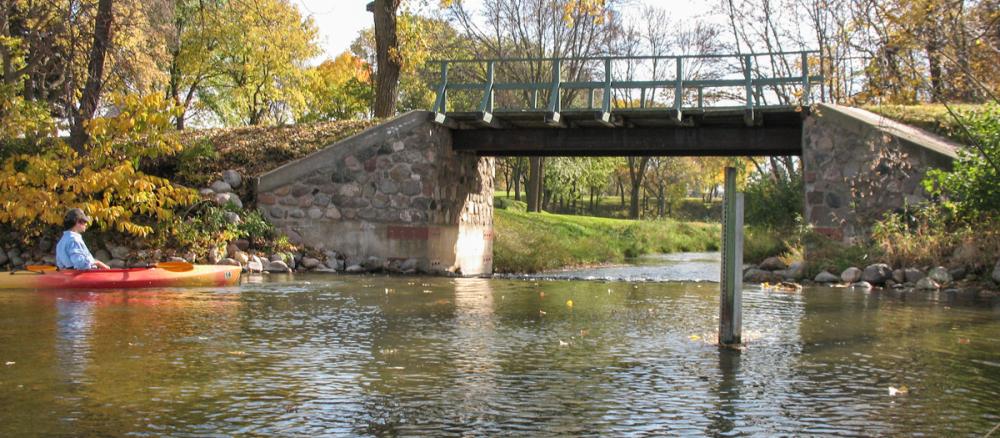The Minnesota River - Yellow Medicine River watershed (1,306,502 acres) has traditionally been managed as two separate watersheds, the Hawk Creek watershed to the north of the Minnesota River and the Yellow Medicine River watershed to the south. Both waterways enter the Minnesota River downstream of Granite Falls. The Minnesota River - Yellow Medicine River watershed is one of the 13 major watersheds in the Minnesota River Basin.
Hawk Creek. Fifteen lakes also lie within its borders, including significant waters such as Eagle, Long, Foot and Willmar. Lake homes and lake recreational activities such as fishing, swimming and boating are common in this part of Kandiyohi County. Additionally, several county/regional parks and more than 15 state wildlife management areas dot the watershed’s landscape. Agriculture is the dominant land use in the watershed and nearly 98% of the original wetlands in the watershed have been drained to increase agricultural opportunities. Agriculture depends on the creek and an extensive network of drainage ditches, open tile intakes and sub-surface tile systems to move water off the landscape and make it suitable for row crop farming. Corn, soybeans, and sugar beets are the primary crops grown in the watershed. Livestock production primarily consists of dairy, turkey, beef and swine. There is some livestock pasturing along riparian areas in the lower portions of the watershed, but it is limited and continues to decrease.
Yellow Medicine River. Cropland is used for the production of row crops, small grains, hay and rotation pasture. Pastureland is used primarily for the production of adapted domesticated forage species used for grazing. Rangeland differs from pastureland in that the natural vegetation is predominantly grasses and grass-like plants, forbs, and shrubs suitable for grazing or use as browse. Forest land is used primarily for the production of wood crops and/or, if applicable, other compatible uses such as recreation, wildlife, grazing, and watershed improvement and protection. The urban and developed land includes nine cities and communities, public roads, and railroads. Other land uses include farmsteads, private roads, quarries and pits, and privately owned wildlife areas. Land use in the Yellow Medicine sub-basin consists of 348,000 acres of cropland (82.3 %), 37,400 acres of pastureland and rangeland (8.9%), 3,600 acres of forest land (0.9%), 3,000 acres of urban and built-up areas (0.7%), and 30,600 acres of other land (7.2%).
Monitoring and assessment
Strategy development for restoration and protection
- Minnesota River bacteria TMDL and strategies report
- (EPA approval 11/20/2017)
- (MPCA approval 9/11/2017)
- (EPA approval 3/28/2017)
- (MPCA approval 11/9/2016)
Other TMDL projects
- (EPA approval 9/20/2012)
- (EPA approval 9/30/2004)
- (MPCA approval 9/27/2005)
- (EPA approval 7/20/2011)
